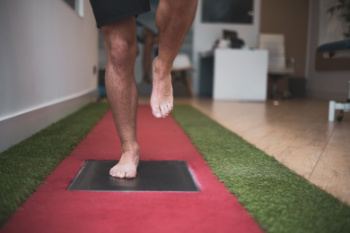
The running gait cycle, a complex sequence of movements, plays a vital role in the biomechanics of the feet. As runners progress through each phase of the gait cycle, their feet undergo a series of motions aimed at generating propulsion and absorbing shock. The cycle typically consists of stance and swing phases. During the stance phase, the foot strikes the ground, starting with the initial contact, followed by mid-stance and propulsion, where the foot pushes off to propel the body forward. Throughout these phases, the foot experiences various biomechanical forces, including pronation, or inward rolling, and supination, which is outward rolling to adapt to the terrain and distribute pressure evenly. In the swing phase, the foot lifts off the ground, preparing for the next stride. Understanding the intricacies of the running gait cycle and how it influences your foot biomechanics is essential for optimizing performance, preventing injuries, and selecting appropriate footwear for runners of all levels. If you are looking for a gait analysis, or if you have endured a foot or ankle injury from running, it is suggested that you visit a podiatrist.
If you have any concerns about your feet, contact David Reynolds, DPM from First Podiatry. Our doctor can provide the care you need to keep you pain-free and on your feet.
Biomechanics in Podiatry
Podiatric biomechanics is a particular sector of specialty podiatry with licensed practitioners who are trained to diagnose and treat conditions affecting the foot, ankle and lower leg. Biomechanics deals with the forces that act against the body, causing an interference with the biological structures. It focuses on the movement of the ankle, the foot and the forces that interact with them.
A History of Biomechanics
- Biomechanics dates back to the BC era in Egypt where evidence of professional foot care has been recorded.
- In 1974, biomechanics gained a higher profile from the studies of Merton Root, who claimed that by changing or controlling the forces between the ankle and the foot, corrections or conditions could be implemented to gain strength and coordination in the area.
Modern technological improvements are based on past theories and therapeutic processes that provide a better understanding of podiatric concepts for biomechanics. Computers can provide accurate information about the forces and patterns of the feet and lower legs.
Understanding biomechanics of the feet can help improve and eliminate pain, stopping further stress to the foot.
If you have any questions please feel free to contact our office located in Evansville, IN . We offer the newest diagnostic and treatment technologies for all your foot and ankle needs.
